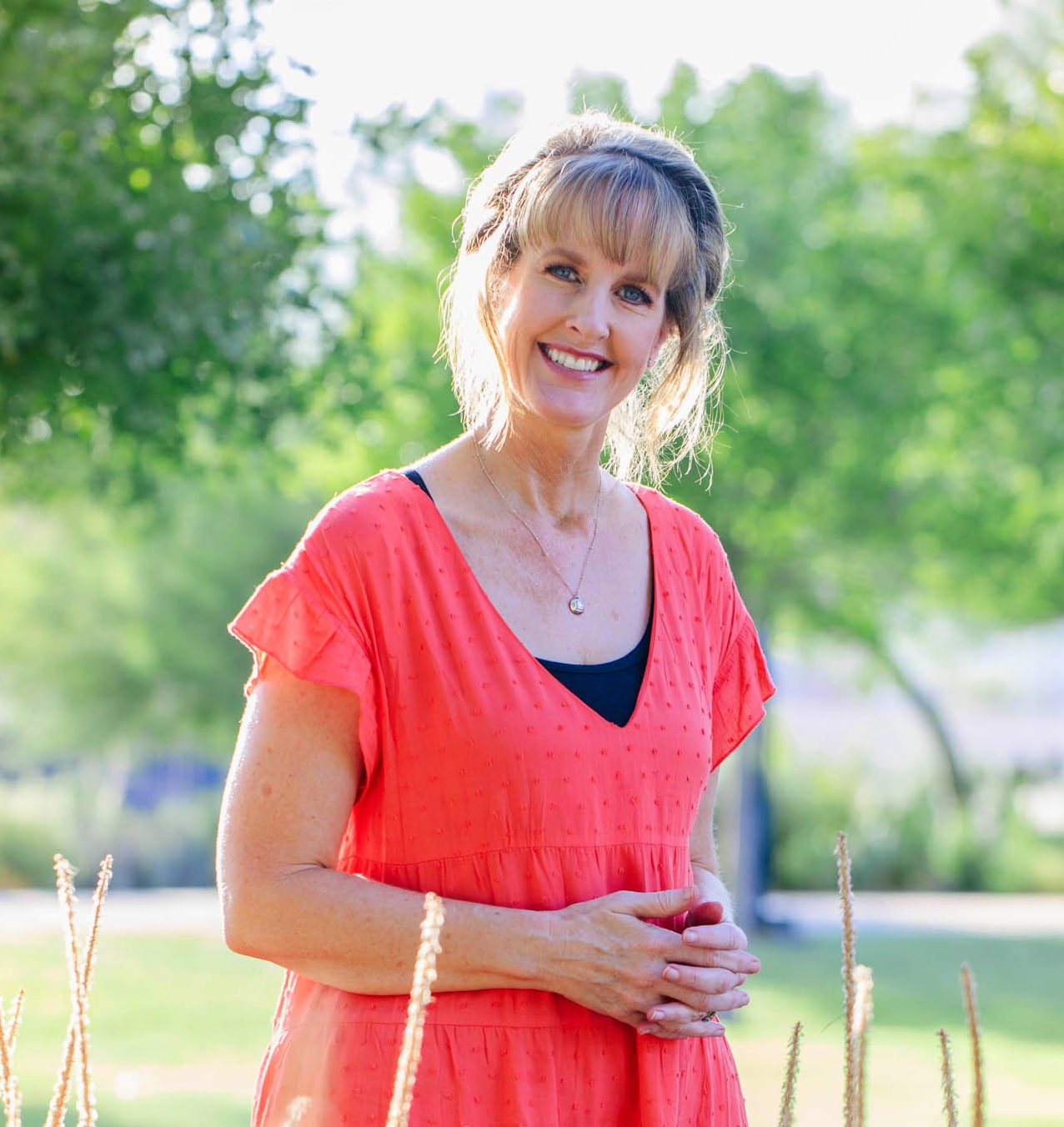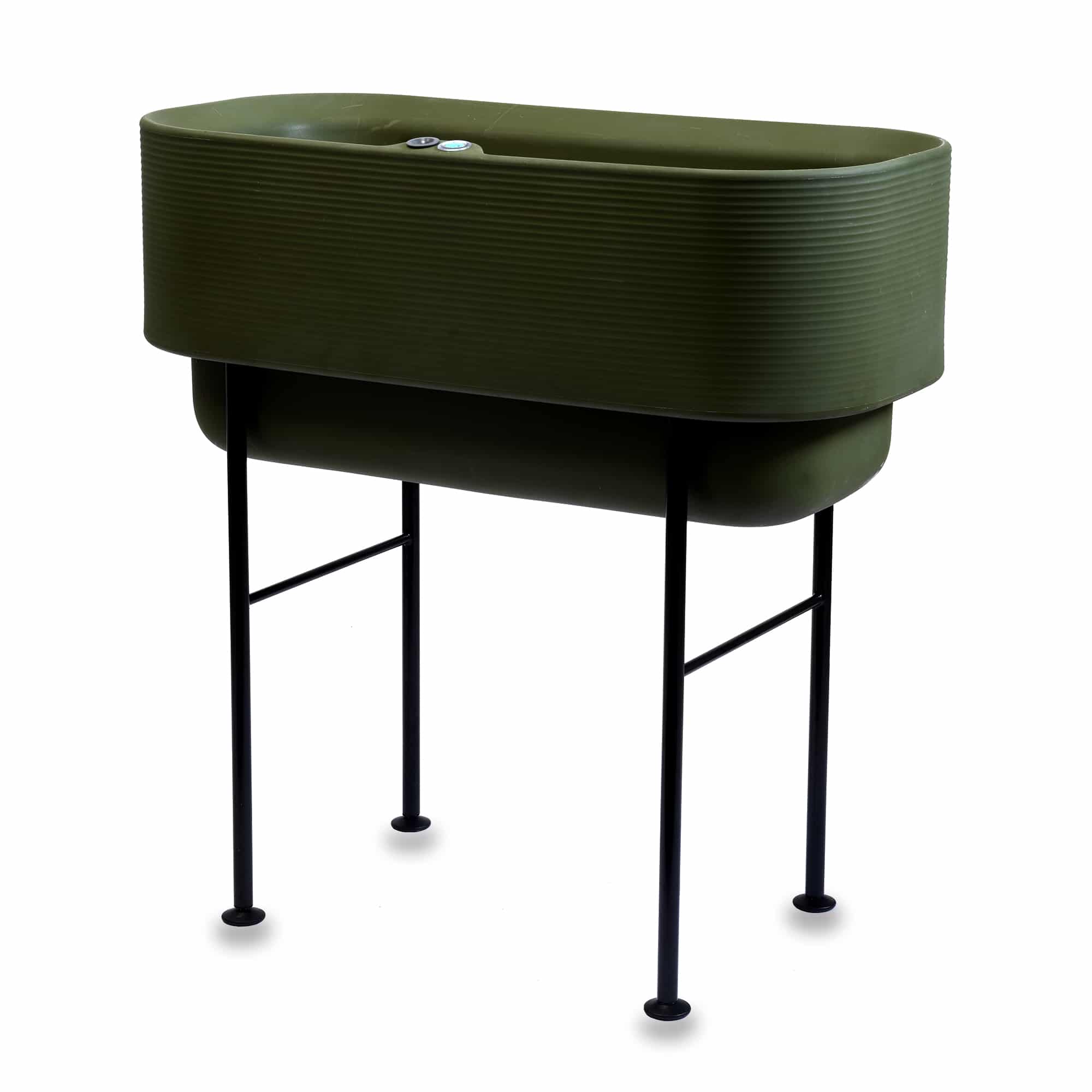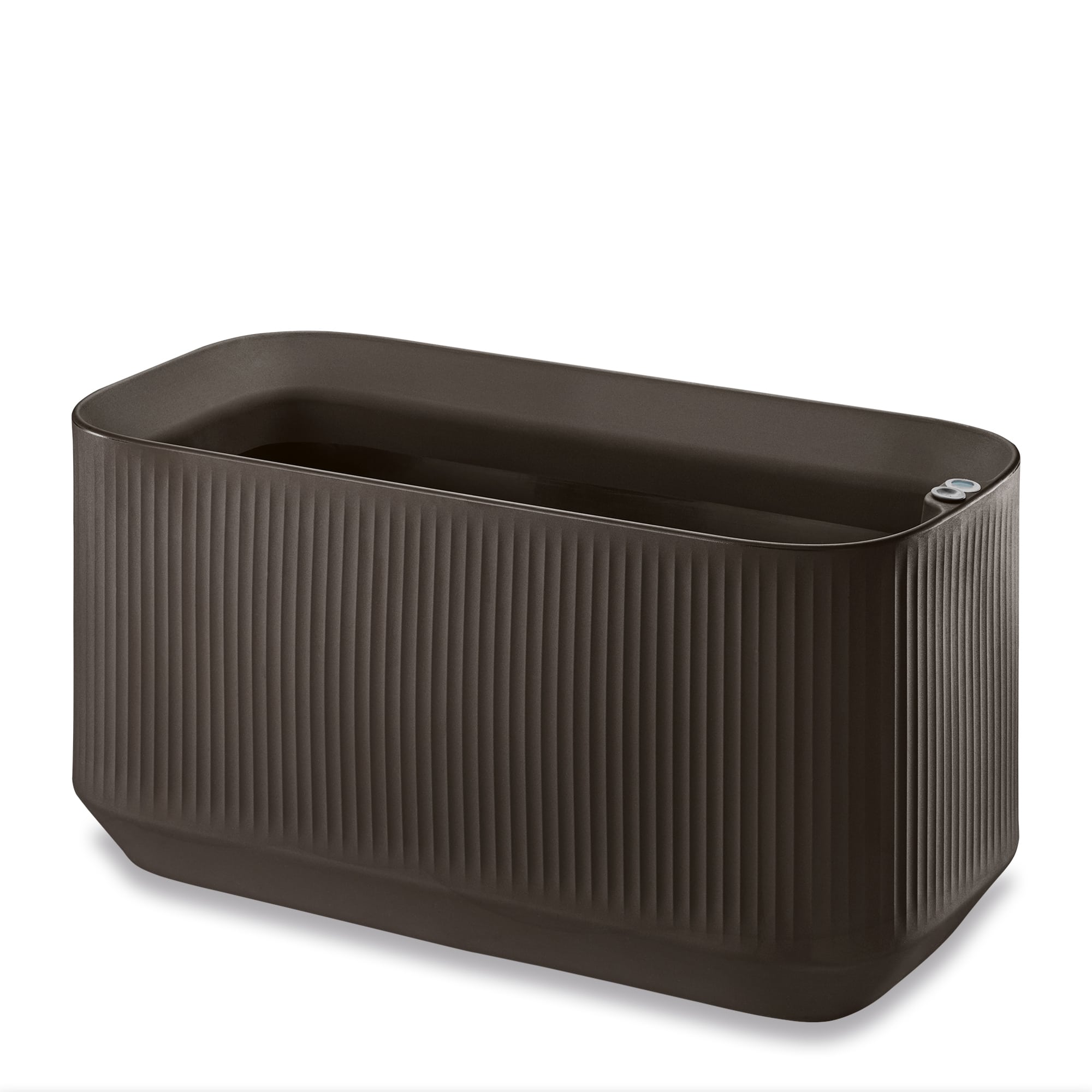Fresh herbs add delicious flavor to your favorite dishes that dried herbs just don’t compare to. However, the limp herbs on your grocery store shelf are expensive and aren’t always the best option. The good news is that you don’t have to settle for herbs from the supermarket – they are easy to grow on your own! Imagine being able to walk a few feet from your kitchen to snip fragrant and delicious herbs whenever you want.
Herbs are fun to grow, and planting them in containers allows for greater ease and versatility. You can grow a single herb or plant different ones together. Here are just a few reasons why you should consider growing herbs in a gardening container:
- Allows you to make the most of small spaces in the garden since you aren’t planting them in the ground
- They have shallow root systems that make them well-suited to containers
- You can grow herbs steps from your kitchen
- Alleviates any problems with poor soil
- Fewer problems with insect pests and disease
- They are decorative and add beauty to your outdoor space
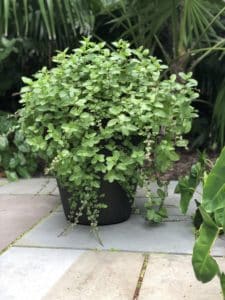
Mint works well on its own
So, what do you need to get started? I’m here to tell you that growing herbs is simple; all you need is sun, the ‘right’ container, potting mix, water and fertilizer.
Once you have that, you’ll need to select a location that receives at least 6 hours of sunlight. In hot climates, you will want to choose a spot that receives after shade or filtered sunlight. You will also need an area where there is easy access to water, such as a hose spigot. Or, alternatively, use a self-watering container that will allow you to go a long time between watering.
For the container, a helpful guideline is to use a 10-inch size pot for a single herb and a 20-inch pot for multiple. When planting several herbs together, allow approximately an 8-inch diameter for each herb to grow. Here’s an insider tip: herbs growing in colorful containers in a shade of blue add a lovely splash of color and contrast nicely with the green tones of herbs.
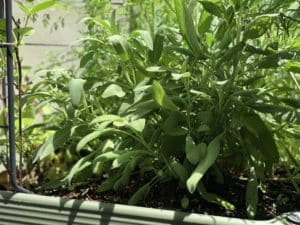
Sage fits in any corner of a planter and adds great earthy flavor to meats and pastas.
The key to healthy herbs is well-drained soil, and a potting (or planting) mix formulated for container gardening is going to be your best choice. After filling your container, mix an organic vegetable fertilizer into the top 8-inches of potting mix, following package guidelines. Before planting, mix water with the potting mix until it is uniformly damp.
Now it is time to ‘design’ your herb container, which will add ornamental beauty to the garden with its attractive foliage. Popular herb choices for container gardens include basil, chives, lavender, marjoram, mint, oregano, parsley, rosemary, sage and thyme. Whatever you choose, it’s essential to plant herbs with similar water requirements together – basil, chives, cilantro, parsley, and tarragon need moister soil, for example. Herbs that prefer drier conditions include marjoram, oregano, rosemary, sage, and thyme. Plant taller herbs toward the back of the container, medium-sized in the middle, and short ones in front so they can trail over the edge of the pot. Another tip to keep in mind: mint makes an excellent container plant but shouldn’t be planted alongside any other herbs (in-ground or in a pot) as its invasive nature will cause it to crowd out other herbs.
Themed herb containers are a creative way to incorporate herbs into your garden, as well. You can dedicate a collection of herbs based on your favorite type of food such as French (basil, lavender, oregano, rosemary, sage and thyme), Italian (basil, oregano, parsley, rosemary and sage) or Mexican (cilantro, oregano, parsley, and thyme).
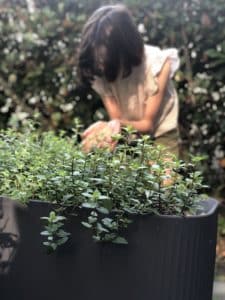
The aroma of fresh herbs adds yet another sensory experience.
Care of container-grown herbs is relatively low-maintenance – in short, you get a lot of flavor for not a lot of work:
- Water when the top 2-inches of soil is dry. You can insert your finger into the soil to determine this.
- Be careful not to overwater your herbs as this leads to disease, straggly growth and lessens the flavor. The frequency of watering changes depending on the weather conditions.
- Apply an organic vegetable fertilizer every eight weeks. Herbs don’t like too much fertilizer, so when in doubt, less is better.
- Harvest up to 1/3 of the outer stems/leaves of the herbs after allowing them a month to become established. Make your cuts above a set of leaves to help stimulate new growth.
- If your herbs are becoming leggy, pinch them back to promote branching and a bushier plant.
- Remove flower buds before they open; flowering can cause many herbs to develop a bitter taste.
Toward the end of the growing season, the bonus of having planted in gardening containers is that you can bring your herbs indoors to grow by a sunny window.
There are many delicious benefits to using fresh herbs, and growing them in containers is both rewarding and easy!
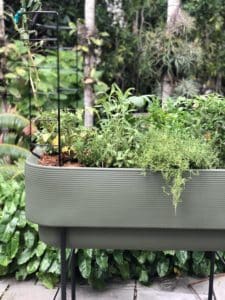
Large planters give you opportunity for greater plant variety.

